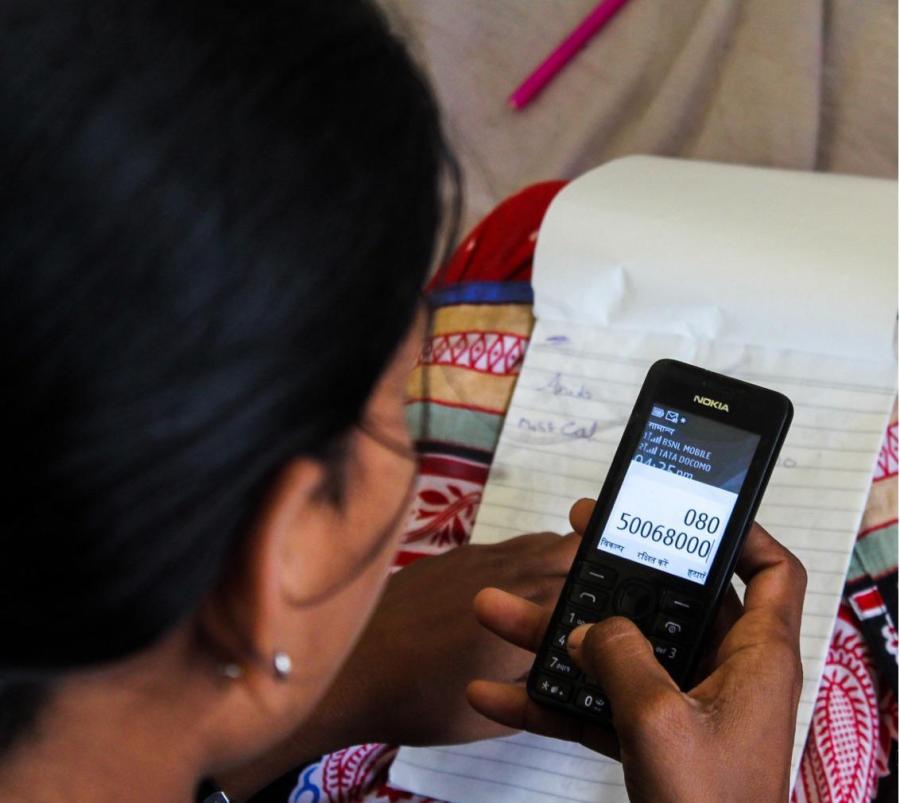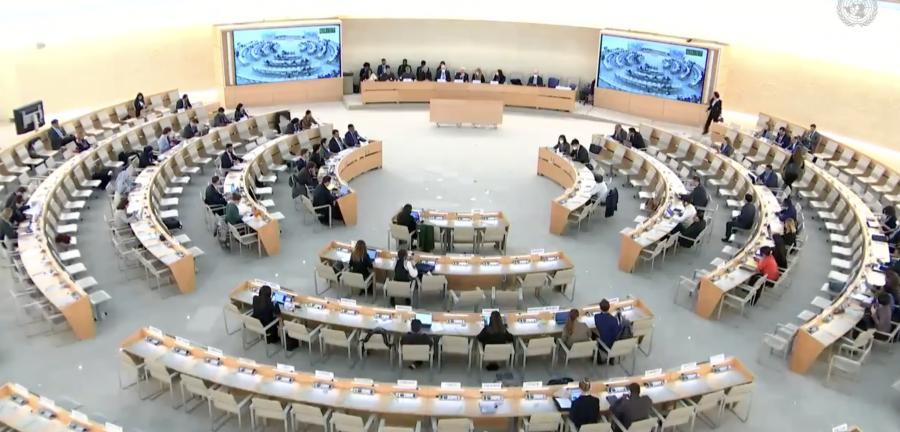On June 20 of this year, the Huaorani Indians, with the support of the Confederation of Indian Nations of Ecuadorian Amazon (CONFENIAE), began the task of physically demarcating Huaorani territories located in the Napo province in eastern Ecuador. Five years after receiving legal recognition of their rights to the land, they feel compelled to physically draw the line against destructive and often illegal development of these lands. Specially, the Indians are protesting the proposed construction of a $22 million road through Yasuní National Park, traditional home to several groups of Huaorani.
The road would facilitate construction of oil pipelines in the region. Construction of such roads through virgin forest tracts of Indian communities inevitably induces a wave of colonization, thus permanently altering the complex and fragile environmental and social dynamics of the region. In a recent report, "The Huaorani Nation and the Defense of its Territory," CONFENIAE and other concerned associations and individuals call for a moratorium on the project while less destructive methods of petroleum extraction are considered - most notably the construction of pipelines by helicopter.
The case of the Huaorani highlights the threats to the continued cultural and physical survival of indigenous peoples in the Ecuadorian Amazon. Though some indigenous peoples have obtained legal recognition of land rights, these gains have often been manipulated by overriding and contradictory government policies. Over the past several years the official policy of an extremely conservative Ecuadorian government has been to promote agribusiness and expand extraction of the country's petroleum reserves, regardless of the environmental and cultural impacts. The timing of the protest action undertaken by CONFENIAE and the Huaorani is opportune - on August 10, a new, more progressive administration came to power in Ecuador, offering some measure of home for a reevaluation of policies regarding colonization, land rights, indigenous peoples and oil exploration.
Indigenous People and Land Policies
Land rights have long been recognized as the primary factor in ensuring the continued physical and cultural survival of indigenous peoples. However, obtaining legal title to lands traditionally occupied by Indians - the essential first step toward self-determination - has proved an arduous task. CONFENIAE, the regional coordinating organization for Indian federations and associations of the Amazonian region, was formed in 1982 to address this problem in a concerted manner.
Prior to that, beginning in 1980, land adjudication in favor of indigenous peoples had been promoted by the Native of Land Demarcation Project, undertaken by and Ecuadorian Inter-Institutional Commission in collaboration with Cultural Survival. The purpose of this project was to elaborate guidelines for determining the land needs of various native groups. Its methods and recommendations led to the successful settlement of several land disputes; specifically the lands formally granted to the Huaorani in 1983, as well as the forest reserve that linked this land to the Yasuní National Park, follow the boundaries stipulated by the Land Demarcation Project.
Thus in recent years some gains have been made in obtaining legal title to ancestral lands. Enforcing Indians rights to those lands has, unfortunately, proven to be a more illusory goal. Ironically, the Indians now find they must reinforce boundaries established by presidential decree in 1983.
Oil Exploitation and Its Consequences
Ecuador, a country that receives 70 percent of its revenue from the export of petroleum, puts great importance on its oil-rich Amazonian region. As oil reserves dwindle and demands on the national economy rise, the pressure to increase exploration and production of new sources intensifies. Indicating the primacy of petroleum in the national sphere, laws governing its extraction supersede any contradictory regulations. Ecuadorian law dictates that the government retain ownership of all subsurface natural resources, which it can exploit at its discretion - making all lands, including those in privately owned and national parks, open to petroleum extraction.
Oil production in Ecuador is administered by the Ecuadorian State Petroleum Corporation (CEPE) under the auspices of the Ministry of Energy and Mines. CEPE has blocked out those regions of the country that are though to contain oil reserves and has opened many of these territories to bidding from foreign corporations. These corporations works on a concessionary basis, providing the initial investment to conduct exploration and began exploitation.
Profits are initially split between the foreign corporation and CEPE; later, CEPE repays the initial investment and regains complete control of the site. Because these corporations are under contract to CEPE the state oil corporation itself decides how the oil extraction will proceed. CEPE in turn may rely on loans from international lending institutions to finance the project. In the case of the current operation in Yasuní National Park, for instance, CONFENIAE reports that CEPE has solicited an $80 million loan from the World Bank, part of which may be used to cover the costs of the road project.
The secondary effects of extraction - road construction and subsequent colonization - pose a much greater threat to the Indians and the environment than does the oil extraction itself. Roads are generally built to facilitate the construction of pipelines that transport the oil from remote well sites. Once a road is built, and often long before construction is actually underway, the route dictates future patterns of settlement and agriculture. Colonists are attracted to the opportunities offered by the new conduit - abundant land and access to markets. Since most colonists engage in agriculture, settled lands are extensively cleared. In addition, settlers apply for legal title to land once it has been cleared and is under cultivation. Initially colonization borders a new road; as this land becomes more settled, however, new colonists are forced to seek suitable land deeper in the forest.
Despite official statements in support of Indian land claims, the government regularly favors colonists, who work to produce a quick return from the land, rather than the Indian communities, who do not undertake this hasty and often destructive development. Thus colonization has scarcely been hindered by legal status of "protection" granted certain lands, and settlers have obtained land titles even in areas where colonization was originally prohibited.
This phenomenon is already apparent in the Huaorani Reserve lands, where the first roads have drawn a steady stream of settlers. More markedly, in the Cuyabeno Forest Reserve to the north, home to several hundred Siona-Secoya Indians, road construction boosted the rapid colonization of the park's periphery by more than 1,000 families. In the extremely fragile environment of the Ecuadorian Amazon, such invasions threaten both the park and its native inhabitants.
Indigenous Peoples Respond with Action
The threats posed by such "development" have spurred the area's indigenous people to politically mobilize and organize, most significantly through the formation of CONFENIAE. Recently, as certain of its more numerous and politically experienced affiliates work independently on their problems and needs. CONFENIAE has concentrated on defending those member groups least able to defend themselves. As part of this new political role, CONFENIAE has undertaken the task of delineating the Huaorani lands.
The Huaorani, currently numbering approximately 900 members, are perhaps the most insular of all native Amazonian communities. In 1987 the group gained notoriety when the Taagairi, a Huaorani subgroup particularly fierce in its determination to protect its fragile independence, killed a bishop and a nun during an attempted encounter. The Indians have good reasons to fear contact with outsiders, which has generally resulted in penetration and destruction of their traditional land holdings. The Indians once exerted control over a 20,000-Km² area; within the past 30 years, due largely to the efforts to foreign missionaries, most Huaorani subgroups have become concentrated within a much smaller area.
The 1983 land settlement that recognized the Huaorani's right to a significant portion of their ancestral lands was hailed as a major advance in the protection of Indian rights. Following the recommendations of the Inter-Institutional Commission, the settlement stipulated that 67,000 ha be titled to the Huaorani while 250,000 ha, connecting the titled lands with Yasuní National Park, across which small groups of the titles, the president of Ecuador proclaimed, "Today we are granting the Huaorani titles to the lands they have occupied for thousands of years...It means that from now on you will be protected by law because you will receive a document which will serve you to stop colonos [colonists] from coming to your land; so that you continue holding the land for yourselves, for your children, grandchildren and their descendants".
Unfortunately, due primarily to government pressures to exploit the oil reserves located on the titled lands, the Forest Reserve and Yasuní National Park, the president's words have not proven prophetic. As the various corporations holding concessions to explore and extract petroleum in the region begin exploitation, the Huaorani are faced with the grim prospect of extensive and unplanned deforestation of their lands. Thus the decision of the Huaorani in conjunction with CONFENIAE to physically delimit the legally titled and reserve lands is an important symbol of their determination to block further destructive, and often illegal, development of those territories.
Alternatives to the Road
The interests of the Huaorani and other indigenous groups do not necessarily conflict with the long-term interests of the Ecuadorian state. Ecuador's indigenous people are primarily protesting the construction of roads, and consequent colonization of their lands rather than the actual extraction of petroleum. It is possible to build and service oil pipelines by air, thus eliminating the need for roads and minimizing the destructive environmental impacts.
In addition, these Amazonian lands are generally unsuitable for the intensive agriculture and clean clearing of forests normally practiced by colonists. The Huaorani possess invaluable knowledge of their complex and delicate ecosystem. Protecting these fragile lands, in turn, requires sensitive and selective cultivation. The future of the environment and its native inhabitants is clearly linked; opening such lands to widespread, uncontrolled colonization generally results in both environmental and cultural destruction.
Though constructing pipelines by air requires a larger initial investment, long-term impact evaluation suggests that this initial outlay may be warranted. Although long-term benefit/cost analysis for environmental issues is just beginning, clearly all the consequences must be factored in when comparing the costs of building a pipeline by air rather than by road. What does it cost to lose a park? What is the cost of the destruction of a unique culture? What costs are incurred by disrupting a fragile environment? what sort of return world result from alternative plans? Once these "hidden" costs are established and factored into the analysis, constructing oil pipelines by air may easily prove to be the most "economic" solution. Preserving or using more sustainable land use practices on the irreplaceable rain forests will provide a measure of protection and autonomy for the unique cultures they shelter, in conjunction with continued petroleum exploitation.
Conclusions
The Huaorani's and CONFENIAE's current actions underscore the choices - and their consequences - to be made regarding the Amazon region. Experts predict that regional oil production will begin to decline within 10 years. Should the future of the region and its people be determined solely by the expediency of petroleum extraction during that time? An important opportunity currently exists to reevaluate the often short-sighted policies of past administrations. CONFENIAE optimistically suggests that the new government of President Rodrigo Borja seize this opportunity. In addition, it asks that the international lending institutions financing CEPE's projects recognize their responsibility for the consequences of the projects they finance and include stipulations in their loans designed to minimize any possible negative impacts.
Article copyright Cultural Survival, Inc.



